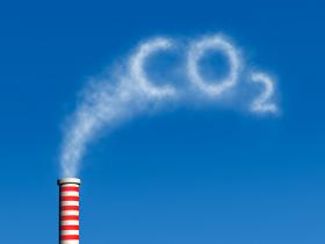 Lima, Peru – Governments already have a powerful tool in the Clean Development Mechanism (CDM) that they can now use to boost and broaden international cooperation to deal with climate change.
Lima, Peru – Governments already have a powerful tool in the Clean Development Mechanism (CDM) that they can now use to boost and broaden international cooperation to deal with climate change.
This was the central message from the 81st meeting of the CDM Executive Board, as country negotiators also gathered in Lima for the annual UN Climate Conference, intent on making further progress toward an ambitious, new climate change agreement next year in Paris.
“We urge countries in Lima this year and in Paris next year to renew their commitment to the CDM,” said CDM Executive Board Chair Hugh Sealy. “This is one of the most effective instruments governments have created under the UN Climate Change Convention. It drives and encourages emissions reductions, climate finance, technology transfer, capacity-building, sustainable development, and adaptation – everything that countries themselves are asking for from the new Paris agreement,” he said.
The CDM assigns saleable credits – called certified emission reductions (CERs) – to approved projects in developing countries that reduce or avoid greenhouse gas emissions and contribute to sustainable development.
The mechanism has so far led to the registration of 7,800 projects and programmes across 107 developing countries with hundreds of billions of dollars in investment, resulting in 1.5 billion fewer tonnes of greenhouse gases entering the atmosphere.
Prices paid for CERs have been stuck at low levels in recent years because demand from principal buyers – countries and companies in those countries tasked with emissions reduction obligations under the Kyoto Protocol – has dropped as emissions reduction targets have not risen significantly and economic growth has slowed.
However, to keep the global average temperature rise below an internationally agreed 2°C degrees, governments know they must cut emissions much more rapidly, requiring more ambitious and transparent national action, stronger economic incentives and effective market-based tools.
Since it was launched a decade ago, governments and stakeholders have evolved and improved the CDM, both as a market mechanism to incentivize emissions reductions and as a trusted international instrument to recognize and evaluate the impact of emissions reduction measures.
“While countries look for a new market mechanism, they can also build on the one they have and recognize the CDM for the powerful tool that it is,” said Mr. Sealy. “They can do this by increasing their demand for CERs before 2020, by recognizing the value that the CDM can add to emerging emissions trading systems, and by recognizing the mechanism’s obvious value to the international response to climate change after the new agreement takes force in 2020,” he said.
At its meeting, the Executive Board also took further steps to improve the CDM, including its system for accrediting the independent entities responsible for validating each project and verifying each emissions reduction. One new such entity was provisionally accredited at the meeting: the China Building Material Test and Certification Group.
“We know that our validators and verifiers are facing a tough market situation, so wherever possible, we’re providing flexibility as long as environmental integrity of projects can be assured,” said Mr. Sealy. “I’m really encouraged to be accrediting a new entity this week, and by the number of accredited entities that continue to see the potential in this mechanism.”
The Board also gave the go-ahead for developing an online, voluntary cancellation tool that will allow any organization, company, event or individual to identify and cancel CERs that are held in the CDM Registry. In effect, cancelling a CER removes a tonne of carbon for good from the atmosphere.
The tool will allow CDM project participants to offer cancellation of their CERs at predefined price levels, and will allow users to select what type of CERs they wish to cancel. Transactions and cancellation would happen instantaneously and at the same time provide the user with an attestation of the cancelled CERs.
The Board also agreed its management action plan of priorities for 2015, including a trimmed budget that will allow CDM operations to continue up until 2020, even without further revenue.
Source: UNFCCC.
About the Kyoto Protocol’s Clean Development Mechanism
The Clean Development Mechanism (CDM) allows emissions reduction projects in developing countries to earn certified emissions reduction (CER) credits, each equivalent to one tonne of CO2. CERs can be traded and sold, and used by industrialized countries to meet a part of their targets under the Kyoto Protocol. The CDM assists countries in achieving sustainable development and emissions reductions, while giving industrialized countries some flexibility in how they meet their emissions targets.


















